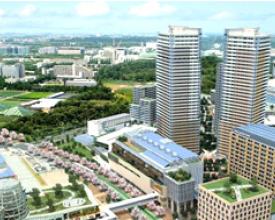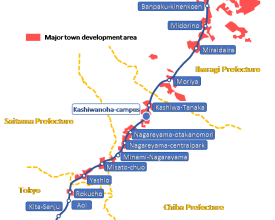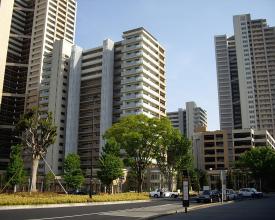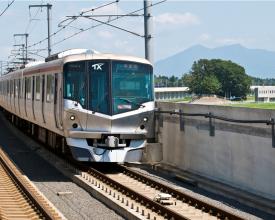
Land Readjustment for Transit-oriented Suburbanization and Land Value Capture
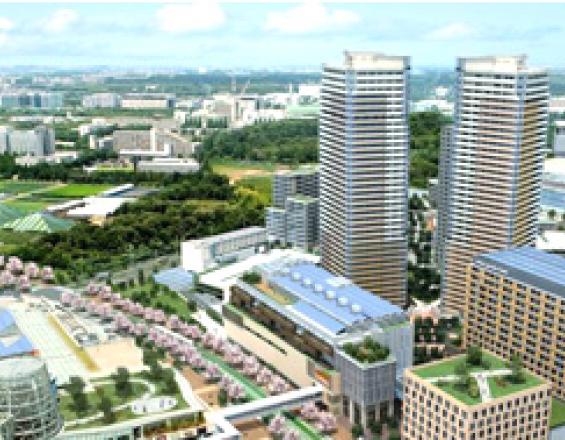
Tsukuba Express is the latest large-scale suburban rail extension in the Tokyo Metropolitan Area that integrates private housing development and public infrastructure investment. The 58.3-km line with 20 stations came into operation in 2005 to offer fast travel between central Tokyo (Akihabara) and the nation’s largest research hub (Tsukuba Science City). When the development plan of Tsukuba Express was proposed, the demand for housing in Tokyo was rapidly swelling and the existing commuting line around the northeast area of Tokyo was seriously congested as there were no alternative modes and routes in the area. To meet the surging demand for both suburban housing and transportation capacity, the national government enacted the Housing-Railway Development Law of 1989, introducing a “special” land readjustment approach that aims to supply a large volume of new housing lots into the high-demand market together with fast rail infrastructure and services to and from central Tokyo.
Context
Challenges addressed
When the development plan of Tsukuba Express was proposed, the demand for housing was rapidly swelling over Tokyo and the existing commuting line around the northeast area of Tokyo was seriously congested as there were no alternative modes and routes in the area.
Location
Process
Summary of the process
Private rail projects have historically been integrated with real estate and other related businesses in Japan during periods of rapid economic growth. By contrast, the Tsukuba Express project was successfully led by the local governments using land readjustment techniques in a special way and during a period of slow growth. This public initiation was successively followed by major developers and other private stakeholders.
Building Blocks
Public Initiative for Land Assemblage
Local governments along a new suburban line can play a pivotal role in land assemblage for both railway and housing development. Under market freehold systems, inclusive land adjustment schemes can be effective to economize urban infrastructure costs and produce transit-oriented built environments together with new rail stations, if land use planning and development incentives are attractive enough for individual landholders to make contributions to the districts designated.
A “special” land readjustment approach was introduced, aiming to supply a large volume of new housing lots into the high-demand market together with fast rail infrastructure and services to and from central Tokyo. Public entities could proactively obtain land parcels contributed by individual private land-holders through the land readjustment scheme. Upon an approval of the project, the contributed land parcels were partially replotted for the railway facility uses transferred to the former Railway Construction Agency at the assessment price, while the other contributed parcels were sold for private property development around newly coming stations, leading to land acquisition cost savings, promoting transit oriented developments, and ensuring sufficient volume of passengers soon after operation.
Enabling factors
- Legislative arrangements to allow for land readjustment
- Special legislation allowing and promoting integrated development of railway and land (e.g. Housing-Railway Development Law in the case of Japan - see http://www.houko.com/00/01/H01/061.HTM for details)
Lesson learned
It is important to bear in mind that much of the area developed through this project was greenfield development (partially brownfield development in sections near Tokyo), hence due attention is recommended in the application of this solution.
Private Contribution for Long-term Township Development
Major developers, key landholders, and academic institutes along new rail lines were involved in not merely raising urban capital funds for short-term profits but rather establishing transit-oriented townships in the long run. Many of these private stakeholders have provided high-quality urban settings and state-of-the-art smart technologies around stations, as motivated to take advantage of the accessibility benefits brought by new rail development and maximize their own asset values with a good image of town management.
A good example of this is Kashiwanoha Campus Station where Mitsui Fudosan Corporation, a real estate giant originally owned the former golf course, reinvested in a new shopping mall, residential tower packages, and community health centers, including the innovative elements of Smart City. The area energy management system invented by advanced technology companies connects building facilities (e.g. commercial and residential buildings, offices, hotels) and electrical facilities (e.g. solar panels, batteries) through a smart grid, which interchange electrical power inside the district cost-efficiently and reserve backup power in cases of natural disasters.
Enabling factors
- Presence of a major developer that can bear capital investment costs prior to full cost recovery through land value capture
- Presence of a leading university to bring together the younger generation in the design of new townships (see http://www.udck.jp/en/ for details)
Lesson learned
Metropolitan-wide rail network extensions from the new science and technology corridor to the central business district, airports, and other sub-employment centers would further accelerate intercity face-to-face interactions, business innovations, and, in turn, cities’ global competitiveness.
Impacts
Economic Impact: The comprehensive rail and housing development contributed to revitalize the local economies of the many cities and towns across the four prefectures. The number of housing and residents also grew along the corridor at a higher pace than that estimated. Consequently, the land prices in 1.5 km of the stations significantly increased from 2005 to 2010. Importantly, the new rail line successfully turned profitable within five years after it came into operation.
Social Impact: The high-amenity housing development package provided around suburban stations have been attracting a number of relatively young households with children. These new residents with private developers have been playing an important role in energizing and creating unique cultures and lifestyles along the corridor.
Environmental Impact: The railway operator and the developers made large efforts to reduce the energy consumption and CO2 emission generated from the newly developed district. Tsukuba Express introduces a variety of ecofriendly systems (e.g., solar panels on station roof, no railway crossing, trains without polishing) to their facilities. In several new satellite towns, the developers challenge to harmonize the new township development with the existing natural setting by preserving large-scale forest and parks around the stations and promoting community-based environmental activities.
Beneficiaries
- Residents along the Tsukuba Express line
- Tsukuba express operators
- Local governments (satellite towns across 4 prefectures)
- Real estate agencies
